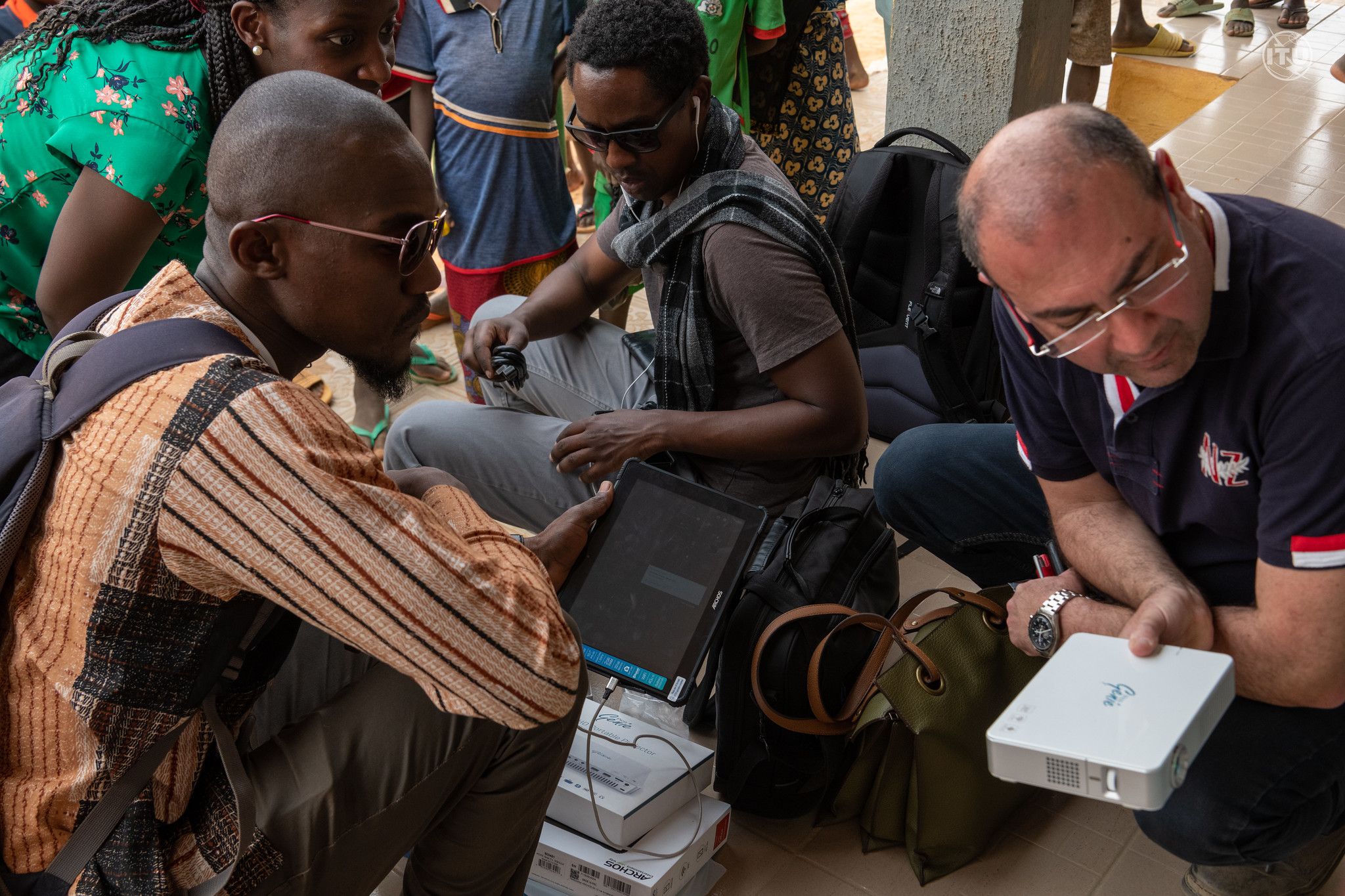
Digital necessity: How smart villages are changing lives in Niger
By ITU News
The villages of Sadore and Borgo Darey lie around 45 kilometres from Niger’s capital Niamey.
The distance can mean life or death when urgent medical care is needed.
“Most of the roads are not well-maintained, and some of the Niger’s villages are 2,000 kilometers away from the capital,” observes Hani Eskandar, Senior Coordinator for Digital Services at the International Telecommunication Union (ITU). “So how can you provide support and serve the needs of those villages?”
With 80 per cent of the country’s 24 million citizens living in remote and rural areas, he added: “Digital is a necessity.”
To better serve rural populations, the government of Niger and the National Agency for the Information Society (ANSI), together with international partners including ITU, the World Bank, Projet Villages Intelligents (PVI), the UN Food and Agriculture Organization (FAO), Université Numérique Francophone Mondiale (UNFM), Swiss aid organization Terre des Hommes, Smart Africa, satellite operators Intelsat and Spacecom, and Dev4Smart, are collaborating on an initiative to bring smart technologies to underserved village communities.
Launched in 2019 to improve rural livelihoods through technology, the Smart Villages initiative uses a cross-sectoral, whole-of-government approach to design, deploy and scale digital solutions that contribute to the UN Sustainable Development Goals.
The Smart Villages approach now serves as a blueprint for the inclusive digital transformation of rural villages across the world.
In Niger, the initiative aims to:
- provide connectivity to all 2,175 villages in the country
- install digital support networks, including telecentres and medical diagnostics
- support local innovation ecosystems
The connectivity quest
The first step in setting up a ‘smart village’ is establishing reliable Internet connectivity.
According to ITU data, some 92 per cent of Niger’s population was covered by a 2G network in 2020, but only 24 per cent had access to a 3G network. Connecting rural and remote communities entails specific technical choices and logistical challenges.
“For a village near a city, the best solution for connectivity might be fiber, but the technology to connect might differ for nomadic tribes who, although they are migratory, still need access to health services and education,” says Anne-Rachel Inné, Head of ITU’s Regional Office in Africa.
So far, 15 Nigerien villages are connected to the Internet via satellite, with 10 more scheduled to be connected in the coming months.
“The hope is that taking this type of universal connectivity all the way to rural areas will truly help us materialize the digital transformation that Africa needs,” Inné adds.
A smart village is a healthy village
Since 2019, two new digital healthcare services were launched in Sadore and Borgo Darey, focused on supporting healthcare workers with dermatology and early childhood illness diagnostics.
Medical practitioners and patients recount how new technologies and applications have transformed local medical care.
“The population thinks health workers are better equipped and can serve them better with these technologies,” says Eskandar, recently returned from a mission to Niger.
In one case, a young patient arrived at the Borgo Darey clinic with a suspected case of leprosy. His parents, seeing his rash, thought amputating his hands would save his life.
Fortunately, the village nurse, unconvinced, snapped a photo using her digital tablet and sent it to a dermatologist based three hours away in Niamey for verification. After two weeks of taking locally available prescription medication, the patient was cured.
Local innovations for local challenges
Niger’s new Innovation City – a hub and incubator near Sadore where innovators develop solutions tailored to local needs – is a key component of the Smart Villages initiative.
“Local people can innovate, but there is no market,” Eskandar explains. “The Smart Villages initiative brings a market perspective.”
A local innovation forum drew 70 entries, offering solutions in fields ranging from e-commerce to agriculture, fintech and education.
Three of those – an e-commerce solution for forestry products and primary and secondary education platforms – were selected as Smart Villages pilot projects.
Next steps
With this proof-of-concept phase successfully completed, the initiative is set for expansion to 25 more villages over the next 12 months.
“Niger had a vision, and we believed in it,” says Eskandar of ITU’s support for the national initiative to bring smart technologies to villages. “We immediately understood the impact and potential.”
But none of this happens overnight. “We can’t push a button, we need to be patient,” Eskandar says. “What we are trying to do is challenging. It has had some great success, and now it is ready for expansion. And the people themselves have confidence.”
Image credit: ITU/S. Acharya
